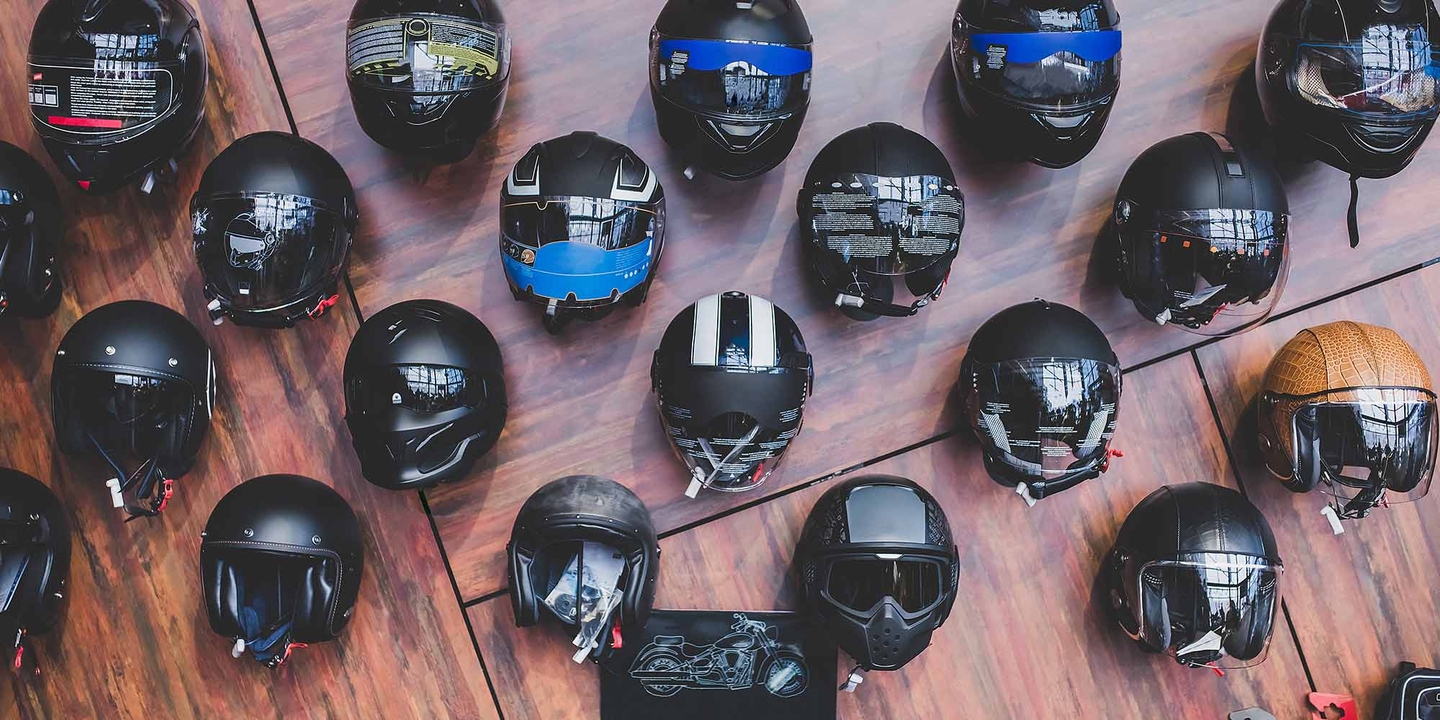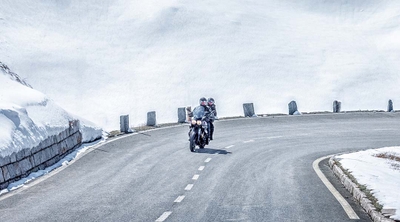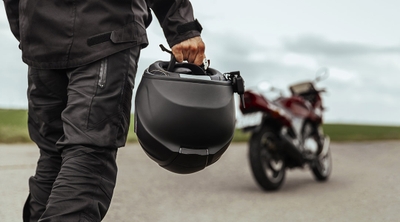How to choose a motorcycle helmet
4 min read
The single most important motorcycle protective safety gear you can buy is a motorcycle helmet. Statistics show that by wearing a motorcycle helmet, a rider will greatly reduce the risk of death or traumatic brain injury in the event of an accident. According to the Centers for Disease Control and Prevention (CDC) research, motorcycle helmets are 37 percent (for riders) and 41 percent (for passengers) effective in preventing deaths. Helmets reduce the risk of head injury by 69% .
The purpose of a helmet is to protect the rider’s head in the case of a crash or accident. However, helmets also protect riders’ eyes and face from debris and bugs. They also protect from other environmental elements and driving conditions, such as driving your motorcycle in the rain and driving your motorcycle in the winter. Beyond safety and protection, there are several other factors to consider when choosing a motorcycle helmet.
Additional considerations for choosing a motorcycle helmet
It’s important to check certifications when choosing a motorcycle helmet. Not all helmets undergo DOT testing. According to Wagan Tech, the DOT does not approve helmet designs rather, they regulate the manufacture of these and other safety-related items. A DOT logo on a helmet signifies that the product meets the DOT standards in its manufacturing.
Other private testing and certification organizations such as Snell, in the U.S. and Sharp in the U.K. publish their own guidelines and test helmets independently. The Snell Foundation, is a non-profit organization that tests and develops helmet safety standards.
Steps for choosing a motorcycle helmet
Regardless of the motorcycle helmet style, if you haven’t properly sized and fit the helmet, all bets for comfort, safety, and fashion are off.
1. Determine the shape of your head
Typically, riders will have one of three common head shapes. The first shape is a long oval shape, where the rider’s head is significantly longer front-to-back than side-to-side. The second is an intermediate oval where the rider’s head is slightly longer front-to-back than side-to-side. Finally, a round, oval shape is where a rider’s head is the same dimension side-to-side as it is front to back.
If you’re not sure how to choose a motorcycle helmet, consult with a reputable and knowledgeable retailer that can guide you to helmet brands that fit better for the shape of your head.
2. Measure your head for helmet size
Using a cloth tape measure, measure from about an inch above your eyebrows and circle it around the largest part of your head. Cross-reference your head size with sizing charts provided by manufacturers to determine the correct helmet size.
3. Try helmets on and find your style
The most important step in choosing your motorcycle helmet is trying them on. Your helmet should fit snugly, have no hot spots or pressure points, and be fastened at the chin with no play. A properly fitted helmet will not allow you to slide your fingers between your forehead and the helmet padding. You should also not be able to move the helmet by lifting the back of the helmet from your neckline forward over your head.
If the helmet moves and your head doesn’t, the helmet is too big. Once you get the right fit, figure out what type of motorcycle helmet style suits you.
What are the different types of motorcycle helmet styles?
There are many types of motorcycle helmets and motorcycle helmet styles to choose from. Let’s explore various types of motorcycle helmets available and how to choose the ideal one for you.
Full-face
A full-face type of motorcycle helmet covers and protects your entire head and provides the best overall protection. They are also the quietest because they reduce wind and road noise. Plus, many offer advanced features such as an internal sun visor that the rider can flip down in the glaring sun. Because full-face helmets can get hot, causing riders to sweat, many manufacturers offer varying ventilation levels and removable, washable liners.
Open face
An open-face motorcycle helmet style protects a rider’s head and ears. But because there is no chin bar, open-face helmets do not protect the face. They look cool, though, even retro or vintage. Some argue that open-face helmets provide more visibility and ventilation. Since nothing covers the mouth, they are more suitable for drinking water or getting a bite to eat without taking off the helmet.
Modular
Modular motorcycle helmet types are a hybrid between a full-face and open-face helmet. The chin bar is hinged so that when a rider wants to stop to eat or drink, read a map, or check their smartphone, it can be flipped up and raised out of the way. However, most modular helmets are not designed to be worn in the flipped-up position while riding because it compromises the helmet’s integrity. According to Cardo Systems, a motorcycle gear manufacturer, “a quality modular helmet is a generally safe and effective motorcycle helmet. While it does not offer the same level of protection of a full face helmet, it’s better than no helmet at all.” The Snell Foundation does not certify modular helmets.
Half
A half-size motorcycle helmet covers and protects the top of a rider’s head. Also known as brain-buckets, half-helmets don’t protect ears, face, or chin. Nor do they have face shields to protect faces and eyes from debris. They are lighter and provide more airflow than any other helmet but lack serious protection. For those more interested in fashion, a half-helmet does project that ultimate ‘bad boy’ or ‘outlaw’ image of motorcycle freedom. They are especially popular with cruiser and Harley-Davidson riders.
Face shield
Full-face and modular helmets are fitted with removable and ratcheted face shields that the rider can position from fully closed to open. Some open-face helmets may offer a shield that the rider can snap onto the exterior. Choosing the right face shield is important when purchasing a new helmet. Available in multiple colors and with varying levels of UV protection, mirrored or dark face shields protect from glare and are best in very bright conditions. Rose- or yellow-tinted face shields can enhance contrast and definition in grey, overcast, or dark conditions.
So, when deciding on your next motorcycle helmet type or style, remember that a pricier model doesn’t always correlate to a safer helmet. Choosing a major and well-known brand that has been safety tested is always a safer bet.






